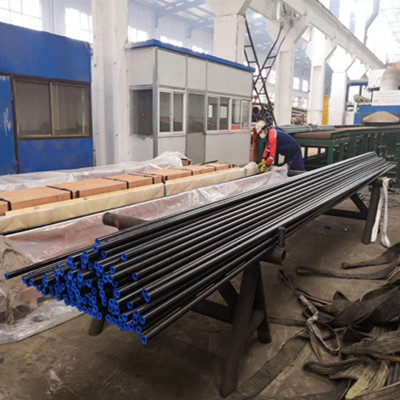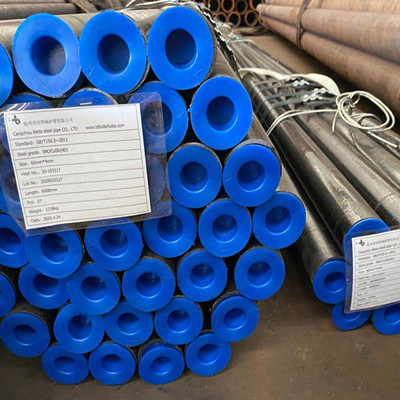Steel hydrogen embrittlement
Steel hydrogen embrittlement
What are the causes of hydrogen embrittlement of steel, and what are the main measures for hydrogen embrittlement treatment?
This article mainly explains the causes of hydrogen embrittlement, and takes the hydraulic main control valve spool as an example to describe the weak points of hydrogen embrittlement, and finally clarifies the main measures of hydrogen embrittlement treatment.
1. The definition of hydrogen embrittlement
Hydrogen embrittlement is the polymerization of hydrogen dissolved in steel into hydrogen molecules, causing stress concentration, exceeding the strength limit of steel, and forming small cracks in the steel, also known as white spots. Hydrogen embrittlement mainly occurs on low-alloy high-strength steel, stainless steel and elastic parts. The main cause of hydrogen embrittlement is surface treatment. Hydrogen generated during the treatment of parts such as electroplating, nitriding, etc. penetrates into the metal and causes disordered lattice arrangement. , Produce distortion, cause internal stress to increase, make the metal or the coating brittle, and cause the parts to break or the coating to fall off. In the process, hydrogen embrittlement needs to meet two conditions: the metal has a higher hydrogen content; there is a certain external force.
Due to the characteristics of hysteresis cracking caused by hydrogen embrittlement, it seriously affects the performance of parts and components, and poses greater safety risks. Therefore, in the design and processing of parts, especially hydraulic components working under high pressure, strict control is required.
2. Applicable scope and procedures of dehydro embrittlement treatment
Not all metals will produce hydrogen embrittlement during surface treatment. According to research data and practice, hydrogen embrittlement mainly occurs in the following materials after surface treatment of parts.
(1) Heat-treated carbon steel and alloy steel parts with tensile strength above 981N/mm2 (or hardness above 38HRC).
(2) Parts of spring steel (including piano wire, oil tempered steel wire, and high-carbon steel wire) with a hardness of 370HV or more.
(3) Martensitic stainless steel products with a tensile strength of 1236N/mm2 or more (or 36HRC or more) heat-treated.
In current processing, the main processes that can cause hydrogen embrittlement are pickling, electroplating, nitriding, and electrolysis. When the above processes are processing the surface of the part, hydrogen will be generated and penetrated into the part, resulting in hydrogen embrittlement.
3. Case analysis of hydrogen embrittlement
Hydraulic products generally need to work under high pressure, and some parts bear greater force. When the parts absorb hydrogen, they will break at their weak points, as shown in Figure 1.

Figure 1 Schematic diagram of the main control valve spool
The inside of the valve core is hollow. Due to functional requirements, the hollow part needs to be sealed with the one-way valve. The valve core is working under high pressure. This requires strong impact resistance and toughness at the matching part of the one-way valve, and at the same time, in order to achieve a certain Many manufacturers choose this kind of valve core surface chromium plating treatment, and the required plating layer is relatively thick, but due to the low current efficiency of the chromium plating process itself, it takes a long time for electroplating and serious hydrogen penetration.
The valve core is made of 42CrMo, the hardness after quenching and tempering is 32~36HRC, and the thickness of the chromium plating layer is 0.04~0.06mm after assembly. The spool is used for hydraulic excavators, with a rated working pressure of 31.3MPa, and due to the characteristics of the excavator, the peak impact pressure can reach more than 60MPa. The spool has no hydrogen embrittlement treatment after electroplating, so it occurs after a period of use on the excavator Fracture, as shown in Figure 2.

Figure 2 Broken spool
After the fracture occurred, physical and chemical analysis was performed on the valve core. The actual hardness of the valve core was 34.5HRC, and the metallographic analysis was performed on the cross section of the valve core before and after electroplating, as shown in Figure 3 and Figure 4. It can be seen from the crystal phase diagram 4 that after electroplating, the crystal phase diagram of the valve core has obvious characteristics of intercrystalline fracture-rock sugar-like fracture.

Figure 3 Crystal phase of valve core before electroplating

Figure 4 Crystal phase of valve core after electroplating
4, measures and prevention of hydrogen embrittlement
To remove the hydrogen embrittlement caused by the adsorption of hydrogen on the parts, the drying process is generally selected, and the drying process is generally divided into:
(1) General drying treatment, the drying temperature is about 200℃.
(2) Low temperature drying treatment, the drying temperature is below 180℃.
The drying method is as follows:
First, the drying treatment is best implemented immediately after the hydrogen adsorption process, and the maximum length should not exceed 4 hours.
Second, the time and temperature of the drying treatment are carried out in accordance with the requirements in the attached table. In principle, the treatment must be completed at one time. After the treatment starts, it cannot be interrupted. It is continuously maintained and completed within the prescribed time.
Third, in the case of re-electroplating after the coating is peeled off, or in the case of performing other coatings after electroplating, the embrittlement process is more than two times, when the drying treatment time from the initial process to the final process is within 4h, only The drying treatment after the final step is carried out, and the others can be omitted.
In the design and processing of parts, hydrogen embrittlement should also be prevented in advance. For example, the materials prone to hydrogen embrittlement can be properly heated, shot peened or vibrated before surface treatment, so that the hydrogen on the workpiece can escape , The stress is released, and the hydrogen embrittlement phenomenon is reduced; on the premise of meeting the performance, try to use processes with less hydrogen permeation, such as surface treatment degreasing, rust removal, etc., and chemical degreasing, cleaning agents or solvents can be used Oil: When removing rust and scale, try to use sand blowing to remove rust. If pickling is used, corrosion inhibitors should be added to the pickling solution.
5. Conclusion
Generally speaking, the greater the strength of the material, the greater the sensitivity to hydrogen embrittlement. In addition to the hardness, the following points should be considered:
(1) When using parts with a high safety factor, hydrogen removal treatment should be strengthened.
(2) Parts with small cross-sectional area, such as small springs, thinner springs, etc.
(3) With notched parts that are prone to stress concentration.
Hydrogen embrittlement is very harmful in the surface treatment process. The requirement of hydrogen embrittlement is a clear concept that technicians must make when designing and processing. Appropriate measures should be taken according to different parts and usage conditions to achieve the purpose of eliminating hydrogen embrittlement.




